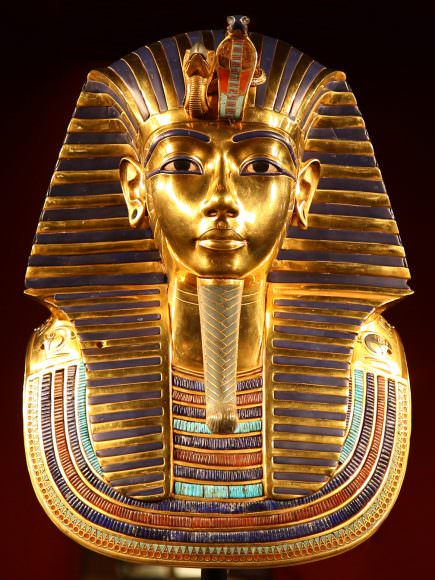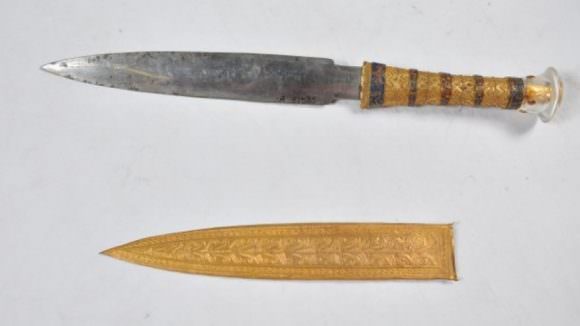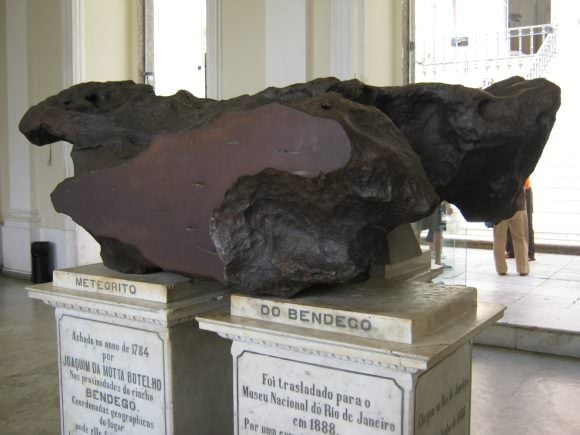The spread of metallurgy in different civilizations is a keen point of interest for historians and archaeologists. It helps chart the rise and fall of different cultures. There are even names for the different ages corresponding to increasingly sophisticated metallurgical technologies: the Stone Age, the Bronze Age, and the Iron Age.
But sometimes, a piece of evidence surfaces that doesn't fit our understanding of a civilization.
[embed]
Probably the most iconic ancient civilization in all of history is ancient Egypt. Its pyramids are instantly recognizable to almost anyone. When King Tutankhamun's almost intact tomb was discovered in 1922, it was a treasure trove of artifacts. And though the tomb, and King Tut, are most well-known for the golden death mask, it's another, little-known artifact that has perhaps the most intriguing story: King Tut's iron dagger.
[caption id="attachment_129287" align="alignnone" width="435"]
King Tutankhamun's Golden Death Mask, one of the most stunning human artifacts in existence. Image: Carsten Frenzl, CC BY 2.0[/caption]
King Tut's iron-bladed dagger wasn't discovered until 1925, three years after the tomb was discovered. It was hidden in the wrappings surrounding Tut's mummy. It's mere existence was a puzzle, because King Tut reigned in 1332–1323 BC, 600 years before the Egyptians developed iron smelting technology.
[caption id="attachment_129288" align="alignnone" width="580"]
King Tut's iron dagger was concealed in the wrappings surrounding the boy-king's mummy. Image: Daniela Comelli/Polytechnic University of Milan[/caption]
It was long thought, but never proven, that the blade may be made of meteorite iron. In the past, tests have produced inconclusive results. But according to a new study led by Daniela Comelli, of the Polytechnic University of Milan, and published in the
Journal of Meteoritics and Planetary Science
, there is no doubt that a meteorite was the source of iron for the blade.
The team of scientists behind the study used a technique called
x-ray fluorescence spectrometry
to determine the chemical composition of the blade. This technique aims x-rays at an artifact, then determines its composition by the spectrum of colors given off. Those results were then compared with 11 other meteorites.
In the dagger's case, the results indicated Fe plus 10.8 wt% Ni and 0.58 wt% Co. This couldn't be a coincidence, since iron meteorites are mostly made of Fe (Iron) and Ni (Nickel), with minor quantities of Co (Cobalt), P (Phosphorus), S (Sulphur), and C (Carbon). Iron found in the Earth's crust has almost no Ni content.
Testing of Egyptian artifacts is a tricky business. Egypt is highly protective of their archaeological resources. This study was possible only because of advances in portable x-ray fluorescence spectrometry, which meant the dagger didn't have to be taken to a lab and could be tested at the
Egyptian Museum of Cairo.
Iron objects were rare in Egypt at that time, and were considered more valuable than gold. They were mostly decorative, probably because ancient Egyptians found iron very difficult to work. It requires a very high heat to work with, which was not possible in ancient Egypt.
[caption id="attachment_129292" align="alignnone" width="580"]
Iron meteorites like this one would have attracted the attention of ancient Egyptians. This one is the Bendego meteorite from Brazil. Image: Jorge Andrade - Flickr: National Museum, Rio de Janeiro CC BY 2.0[/caption]
Even without the ability to heat and work iron, a great deal of craftsmanship went into the blade. The dagger itself had to be hammered into shape, and it features a decorated golden handle and a rounded rock crystal knob. It's golden sheath is decorated with a jackal's head and a pattern of feathers and lilies.
Ancient Egyptians probably new what they were working with. They called meteorite iron from the sky
in one hieroglyph
. Whether they knew with absolute certainty that their iron meteorites came from the sky, and what that might have meant, they did value the iron. As the authors of the study say, "...our study confirms that ancient Egyptians attributed great value to meteoritic iron for the production of precious objects."
The authors go on to say, "Moreover, the high manufacturing quality of Tutankhamun's dagger blade, in comparison with other simple-shaped meteoritic iron artifacts, suggests a significant mastery of ironworking in Tutankhamun's time."
 Universe Today
Universe Today



